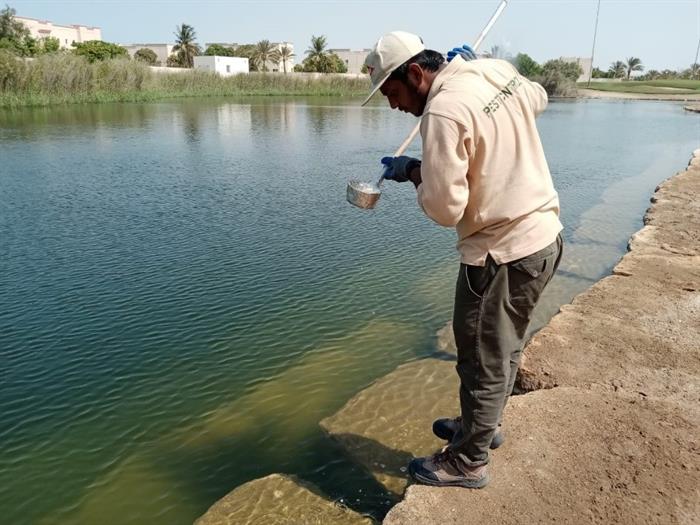

Background:
In 2010, mosquito-eating fish (Tilapia - Oreochromis niloticus) were introduced to The Golf Course Treated Sewage Effluent (TSE) Pond (commonly called Lake 1) to control mosquito larvae biologically. As a larvivorous fish, Tilapia provided excellent control over mosquito larvae in that lake.
To extend this biological control to other golf course lakes, such as Lake 4, 5a, and 5b, Tilapia were introduced. However, they could not survive due to the high salinity of the water. Despite an ongoing search for a mosquito-eating fish that could survive in these lakes, success was limited until the idea of trying local mangrove fish emerged. In June 2020, a small number of mangrove fish (Aphanius dispar) from the northern part of KAUST were collected and kept overnight in a jar with mosquito larvae for testing. The results were as expected: the fish fed on mosquito larvae. The tests were repeated multiple times with consistent results.
Introduction of Aphanius dispar as Biological Control:
Following the convincing test results, a small number of Aphanius dispar were released into the lakes as a biological control measure. Weekly monitoring of the lakes recorded the following:
A significant increase in the fish population was observed 6 weeks after their release into the lakes.
Within just 10 weeks, the presence of fish became evident in various parts of the lakes, including the shallow areas of the connecting stream.
Since the release of Aphanius dispar, the lakes have not tested positive for mosquito larvae. The successful adaptation of this biological control has resulted in an 83% reduction in pesticide use for controlling mosquito larvae in water bodies throughout KAUST.
